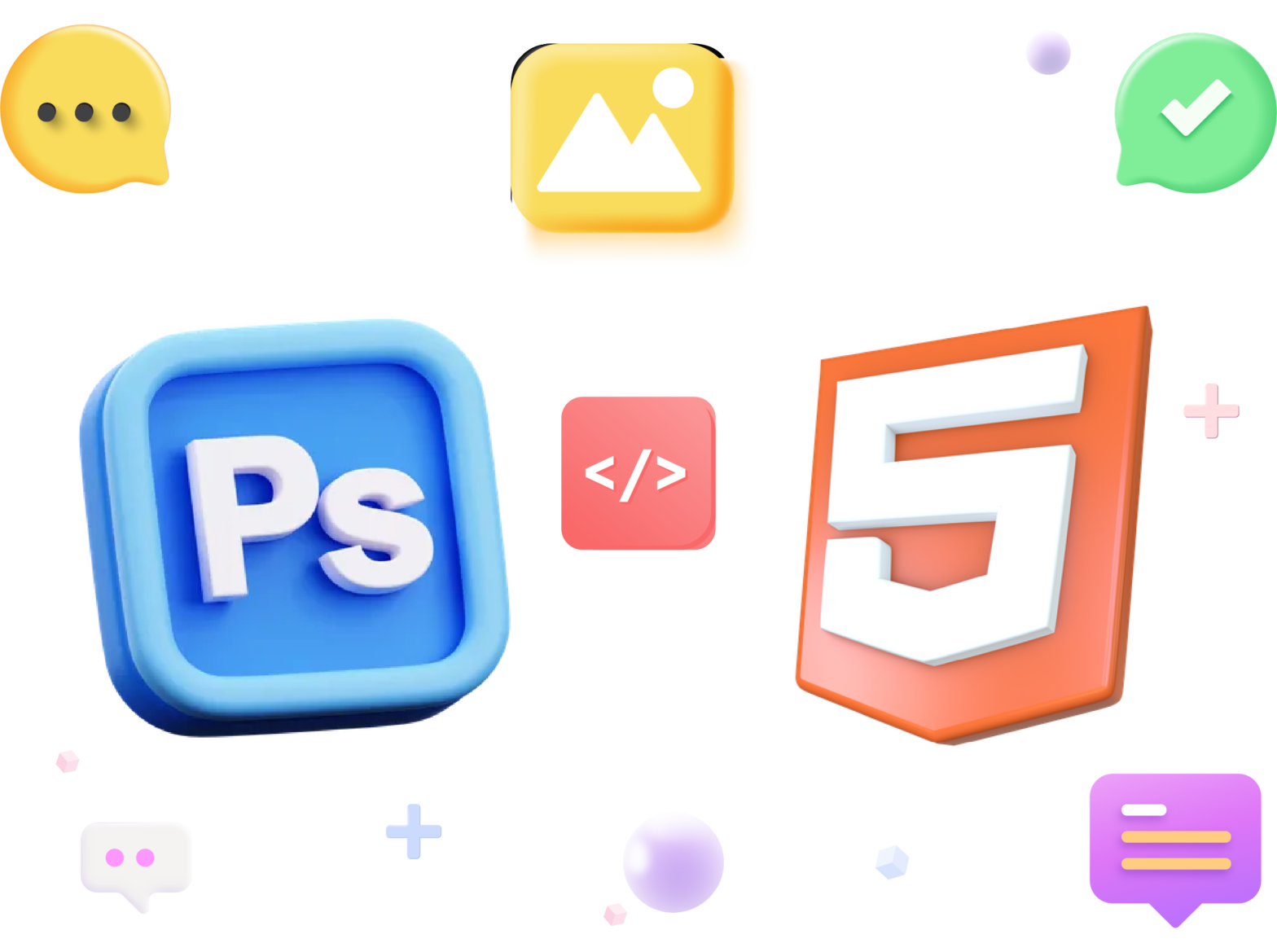Introduction
PSD to HTML development services involve converting Photoshop design files (PSD) into functional HTML code. This process is essential for creating visually appealing and responsive websites. In the USA, the demand for PSD to HTML service in u.s.a is high due to the growing need for customized web solutions that offer unique user experiences.
The Importance of PSD to HTML Conversion
Converting PSD designs to HTML is a critical step in web development. It ensures that the visual design created by graphic designers is accurately translated into a functional web page. This process is important for several reasons:
- Precision and Consistency: PSD to HTML conversion ensures that the website’s design is implemented with precision, maintaining consistency across different browsers and devices.
- SEO Friendliness: Properly coded HTML enhances the website’s SEO, making it easier for search engines to crawl and index the content.
- Responsive Design: By converting PSD to HTML, developers can ensure that the website is responsive, providing an optimal viewing experience across various devices.
Key Components of PSD to HTML Conversion
The process of PSD to HTML conversion involves several key components:
- Slicing the PSD: The first step is slicing the PSD file into smaller, manageable pieces. Each section is then converted into HTML and CSS.
- HTML Coding: Writing clean, semantic HTML code that accurately represents the sliced PSD elements.
- CSS Styling: Applying CSS to style the HTML elements according to the design specifications. This includes setting fonts, colors, layouts, and other visual aspects.
- JavaScript Integration: Adding JavaScript to enhance interactivity and functionality, such as sliders, forms, and animations.
- Responsive Design: Ensuring the website is responsive by using media queries and flexible layouts to adapt to different screen sizes.
Strategies for Effective PSD to HTML Conversion
To achieve effective PSD to HTML conversion, the following strategies are recommended:
- Use Semantic HTML: Writing semantic HTML tags helps improve SEO and accessibility, making the website more user-friendly and easier for search engines to understand.
- Optimize Images: Compressing and optimizing images to reduce load times without compromising quality.
- Adopt a Mobile-First Approach: Designing for mobile devices first ensures that the website is optimized for smaller screens and then scaling up for larger devices.
- Cross-Browser Compatibility: Testing the website across different browsers to ensure consistent performance and appearance.
- Clean and Commented Code: Writing clean, well-commented code makes it easier to maintain and update the website in the future.
Benefits of PSD to HTML Conversion Services
PSD to HTML conversion services offer numerous benefits for businesses in the USA:
- High-Quality Websites: Professional PSD to HTML conversion results in high-quality, visually appealing websites that accurately reflect the original design.
- Improved User Experience: A well-converted website provides a seamless user experience, leading to higher user engagement and satisfaction.
- Faster Load Times: Optimized HTML and CSS code ensures faster load times, which is crucial for retaining visitors and improving search engine rankings.
- Better SEO Performance: Proper HTML coding enhances the website’s SEO performance, driving more organic traffic and increasing visibility.
- Customization and Flexibility: PSD to HTML conversion allows for extensive customization, enabling businesses to create unique and tailored web solutions.
Challenges of PSD to HTML Conversion
While PSD to HTML conversion offers many benefits, it also presents several challenges:
- Complex Designs: Converting complex and detailed PSD designs into functional HTML code can be time-consuming and challenging.
- Responsive Design: Ensuring that the website is fully responsive and functions well on all devices requires careful planning and execution.
- Browser Compatibility: Achieving consistent performance across different browsers can be difficult due to varying support for HTML, CSS, and JavaScript features.
- Code Maintenance: Maintaining clean and organized code is essential for future updates and changes, but it can be challenging without proper documentation and commenting.
Future Trends in PSD to HTML Conversion
The future of PSD to HTML conversion services in the USA looks promising, with several trends emerging:
- Automation Tools: The use of automation tools and AI to streamline the PSD to HTML conversion process, reducing time and effort.
- Advanced CSS Techniques: Leveraging advanced CSS techniques such as CSS Grid and Flexbox for more flexible and efficient layouts.
- Progressive Web Apps (PWAs): Converting PSD designs into progressive web apps to provide a native app-like experience on the web.
- Web Accessibility: Ensuring web accessibility standards are met to provide an inclusive experience for all users, including those with disabilities.
- Faster Load Times: Continued focus on optimizing code and resources to achieve faster load times and better performance.
Conclusion
PSD to HTML development services play a crucial role in the web development process, ensuring that visually stunning designs are translated into functional and responsive websites. Website Development Company In USA By understanding the importance, key components, and effective strategies for PSD to HTML conversion, businesses in the USA can leverage these services to create high-quality web solutions. Despite the challenges, the benefits and future trends indicate that PSD to HTML conversion will remain an essential aspect of web development in the ever-evolving digital landscape.

